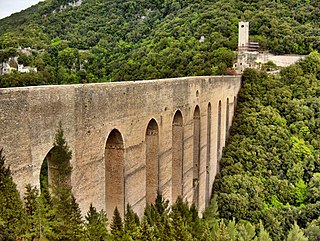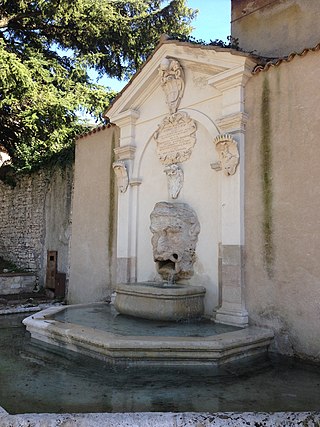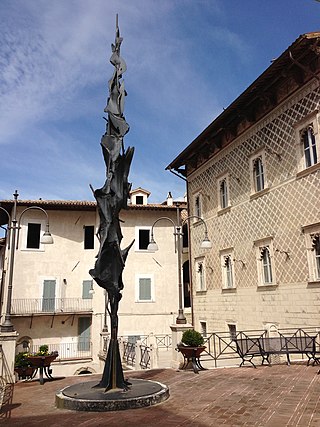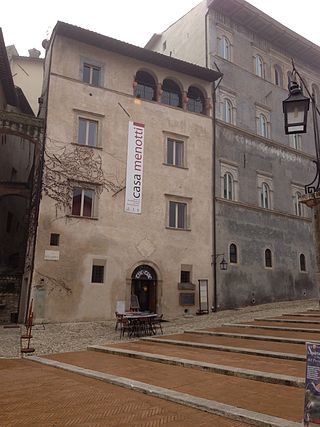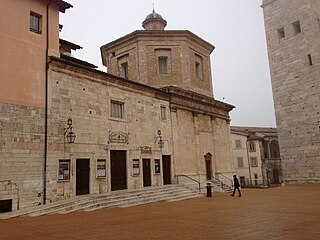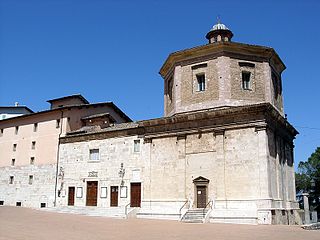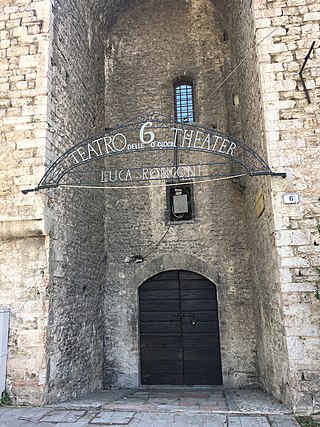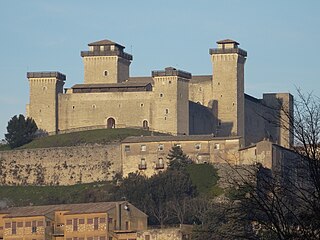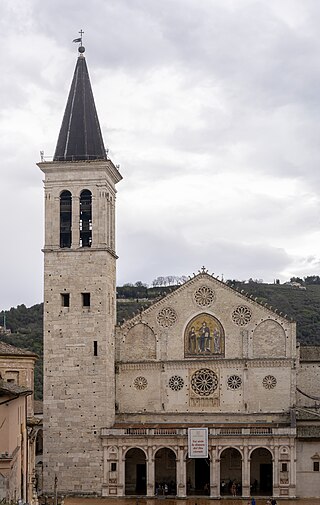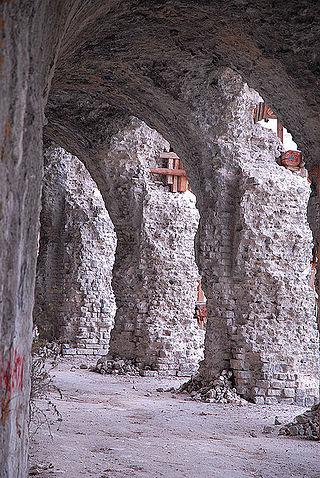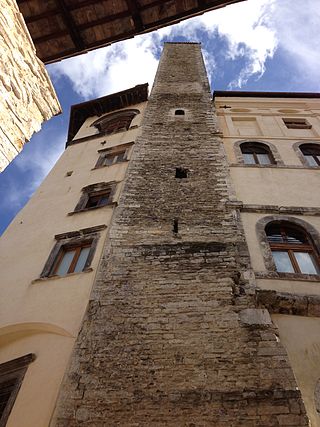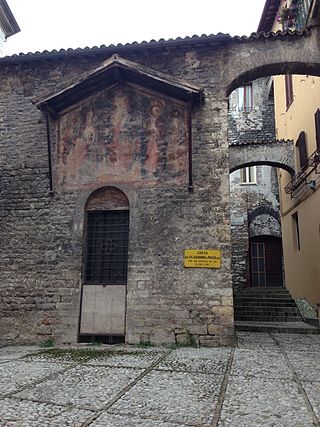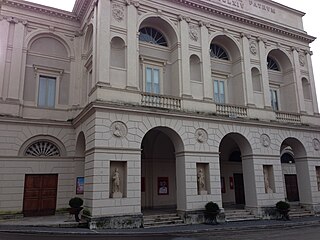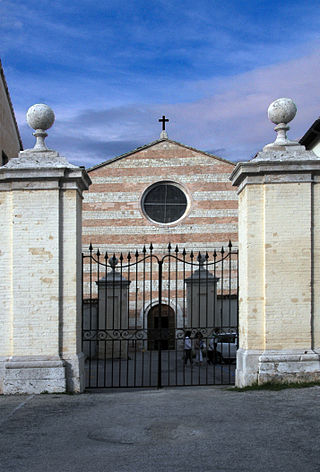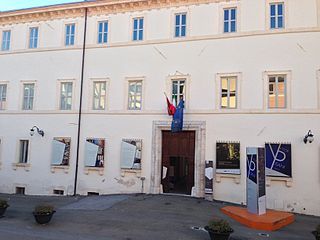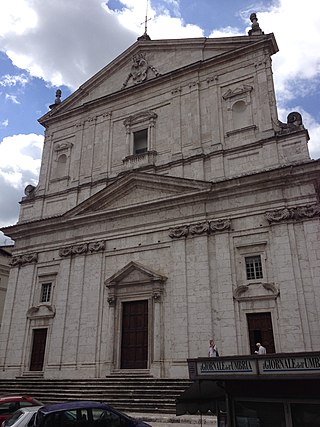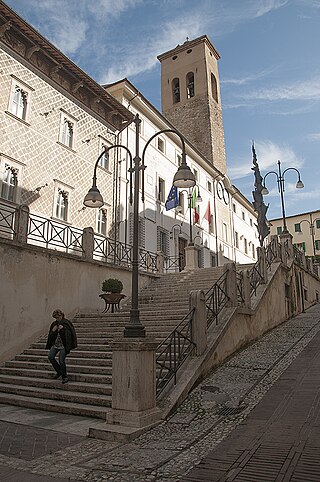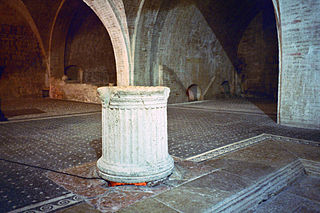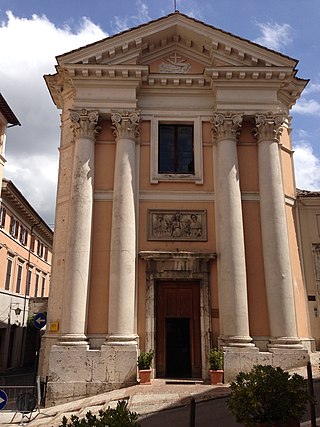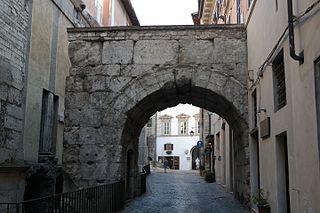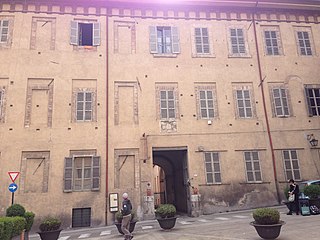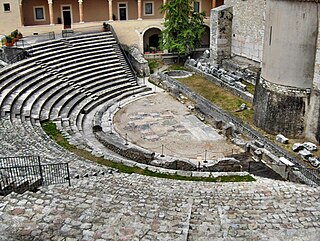Self-guided Sightseeing Tour #1 in Spoleto, Italy
Legend
Tour Facts
5.7 km
446 m
Experience Spoleto in Italy in a whole new way with our free self-guided sightseeing tour. This site not only offers you practical information and insider tips, but also a rich variety of activities and sights you shouldn't miss. Whether you love art and culture, want to explore historical sites or simply want to experience the vibrant atmosphere of a lively city - you'll find everything you need for your personal adventure here.
Individual Sights in SpoletoSight 1: Ponte delle Torri
The Ponte delle Torri is an arched bridge derived from a Roman aqueduct located in Spoleto.
Sight 2: Fontana del Mascherone
The Fountain of the Mascherone, also known as the fountain of San Simone, is a fountain in Spoleto, Italy, in Piazza Bernardino Campello. It is leaning against the wall near the thirteenth-century former church of Saints Simon and Jude.
Sight 3: Stranger III
Sculptures in the city was an open-air exhibition/set-up that saw the city of Spoleto transformed into a "Museum City" in the summer of 1962, as part of the fifth edition of the Festival of Two Worlds. It is one of the most salient episodes of international sculpture of the twentieth century.
Sight 4: Casa Menotti
Casa Menotti is a sixteenth-century palace in Spoleto, Italy, located in Piazza del Duomo.
Sight 5: Teatro Caio Melisso
The Teatro Caio Melisso is an opera house located in Spoleto, Italy and it serves as the main venue for opera performances during the annual summer Festival dei Due Mondi.
Sight 6: Santa Maria della Manna d’Oro
Santa Maria della Manna d'Oro is a renaissance-style, former sanctuary-church located in the center of Spoleto, Province of Perugia, region of Umbria, Italy. The church faces the piazza del Duomo.
Sight 7: 6 o'clock theatre Luca Ronconi
The Teatrino delle sei is located in the historic center of Spoleto. It owes its name to the time at which the shows hosted in the first editions of the Festival of Two Worlds began. For a period it was also called the Teatrino delle sette.
Sight 8: Museo nazionale del Ducato di Spoleto
The National Museum of the Duchy of Spoleto, inaugurated on August 3, 2007, is located inside the Rocca Albornoziana.
Wikipedia: Museo nazionale del Ducato di Spoleto (IT), Website
Sight 9: Cappella della Santissima Icone
Spoleto Cathedral is the cathedral of the Archdiocese of Spoleto-Norcia created in 1821, previously that of the diocese of Spoleto, and the principal church of the Umbrian city of Spoleto, in Italy. It is dedicated to the Assumption of the Blessed Virgin Mary.
Sight 10: Anfiteatro Romano
The monumental complex of the Amphitheater is located in a large area north of Spoleto, outside the first city walls, on the left bank of the Tessino stream. It occupies an area of about 17,000 m², a city within the city, which includes the remains of a Roman amphitheater, three large cloisters, gardens, courtyards and two former monasteries with their respective churches: the church of Saints Stephen and Thomas and the church of San Gregorio Minore or de griptis.
Sight 11: Madonna della Piaggia
The Church of Santa Maria della Concezione is located in Spoleto, in an area once occupied by the vegetable gardens of the Augustinian convent of San Nicolò. Locally it is also known as Santa Maria della piaggia. After the Unification of Italy it was reduced to military use and used as a warehouse by the Umberto I military district and later by the Municipality. Only in 2005 was it returned to worship.
Wikipedia: Chiesa di Santa Maria della Concezione (Spoleto) (IT)
Sight 12: Torre dell’Olio
The Oil Tower is an ancient tower of thirteenth-century origin located in the historic center of Spoleto; it is incorporated into Palazzo Vigili, near the Porta Fuga. It belonged to the vaita Grifonesca. With a height of 45.50 meters, it is the tallest tower in the city. It is entirely privately owned, divided between 5-6 owners. It cannot be visited.
Sight 13: Chiesa di San Nicolò
The monumental complex of San Nicolò is located in Spoleto, downstream of the city cathedral, in an area of late-medieval urban expansion. It includes a former church, a former convent, and two cloisters. Between the fourteenth and eighteenth centuries the church was considered one of the most important sacred buildings in the city and the adjoining convent was the seat of an active cultural center. After the restoration of the entire architectural complex, which took place in the 60s of the twentieth century, the building served as a theater, an exhibition center and a conference center.
Sight 14: Chiesa dei Santi Giovanni e Paolo
The church of Saints John and Paul is located in the historic center of Spoleto, annexed to Palazzo Travaglini, in the ancient Vaita Filittèria, which in late medieval times was the Byzantine quarter of the city. It is a modest building of the Romanesque age that after the consecration, which took place in 1174, carried out parish functions.
Sight 15: Gian Carlo Menotti theatre
The Teatro Nuovo Gian Carlo Menotti is an Italian-style theater located in Spoleto; since 1947 it has been one of the venues of the activity of the Teatro lirico sperimentale. Inaugurated in 1864 on a project by Ireneo Aleandri, it has undergone successive renovations over the decades and its actual capacity is about 800 seats, making it the largest Italian theater in Umbria.
Sight 16: Chiesa di San Domenico
The church of Saints Dominic and Francis, better known as the church of San Domenico, is located in Spoleto, on the square of the same name, near Palazzo Collicola. It was once part of the Salamonesca vaita.
Sight 17: Galleria d'arte moderna Giovanni Carandente
The Palazzo Collicola is a museum named in memory of Giovanni Carandente located inside Palazzo Collicola, an eighteenth-century building that occupies the entire western side of the square of the same name in the historic center of Spoleto. Inaugurated in 2000, it was then refitted in 2019. Together with the Burri Collection in Città di Castello, it is the most important museum of contemporary art in Umbria. Before 2009 it was called the Civic Gallery of Modern Art. After Gianluca Marziani (2010-2018), the direction passed into the hands of the critic and art historian Marco Tonelli (2019-2023), who was Carandente's collaborator. In May 2023, after a special selection, the position was given to the new director Saverio Verini, Umbrian curator and art historian.
Wikipedia: Museo Carandente, Palazzo Collicola - Arti visive (IT), Website
Sight 18: Chiesa di San Filippo Neri
San Filippo Neri is a baroque-style, Roman Catholic church located in the town of Spoleto, in the province of Perugia, region of Umbria, Italy.
Sight 19: Fontana di Largo Clementi
There are about fifty fountains in Spoleto: some are located outside the city walls, others, in greater number, are concentrated in the historic center, in the streets, in the squares, inside some historic buildings.
Sight 20: Palazzo comunale
The Town Hall of Spoleto is located halfway between the forum, now Piazza del Mercato, and Piazza del Duomo, in an area where noble houses, private or representative residences have stood since ancient times. Its foundations rest in part on the area of the Roman House discovered by Giuseppe Sordini in 1885. After a long renovation completed in 2007, the building houses the institutional and political bodies of the city.
Sight 21: Museo diocesano
The Diocesan Museum of Spoleto is located inside the Archbishop's Palace, in the wing called "Cardinal's Apartment".
Sight 22: Casa romana
The Roman House of Spoleto, dated to the beginning of the first century AD, is a stately home discovered by the Spoleto archaeologist Giuseppe Sordini in the years 1885-1886 and excavated several times until 1914. It is located partly under the Town Hall square and partly under the Town Hall of which it occupies the foundations.
Sight 23: Fonte di piazza
The Fountain of Piazza del Mercato, also known as Fonte di Piazza, is located in Spoleto, in the square of the same name once called Piazza del Foro, a center of trade and commerce in Roman times, and today the heart of the historic center.
Sight 24: Sant'Ansano
Sant'Ansano is a neoclassical-style, Roman Catholic church located in the town of Spoleto, in the province of Perugia, region of Umbria, Italy.
Sight 25: Arco di Druso e Germanico
The Arch of Drusus and Germanicus is a Roman arch of the early first century located in Spoleto, close to the Roman temple and the church of Sant'Ansano. It was the monumental access gate to the city's forum from the Via Flaminia, bypassing the maximum hinge. It belonged to the vaita Frasanti.
Sight 26: Museo del Tessile e del Costume
The Museum of Textiles and Costume in Spoleto is a museum site included in the Umbrian-Marche interregional network called Sistema museo. It was born following the donation of Lucia Portoghesi, in favor of the municipality of Spoleto, of her personal collection consisting of textile finds ranging from the fourteenth to the twentieth century.
Sight 27: Teatro Romano
The Roman Theatre is a theatre building in Spoleto (Spoletium), dating back to the first century BC. It has a diameter of 114.40 meters, while the cavea measures about 70. It is located within the monumental complex of Sant'Agata.
Sight 28: National archaeological museum
The monumental complex of Sant'Agata is located within the archaeological area of Spoleto in the area between Via di Sant'Agata and Via delle Terme; it consists of the former monastery of Sant'Agata, the adjacent former church of the same name and the Roman Theater. It belonged to the vaita San Benedetto. They are exhibition venues, venues for temporary exhibitions, events and shows.
Wikipedia: Complesso monumentale di Sant'Agata (IT), Website
Sight 29: Madonna di Loreto
The Church of the Madonna di Loreto is a renaissance-style, Roman Catholic church located in Spoleto, Province of Perugia, Umbria, Italy.
Share
How likely are you to recommend us?
Disclaimer Please be aware of your surroundings and do not enter private property. We are not liable for any damages that occur during the tours.
GPX-Download For navigation apps and GPS devices you can download the tour as a GPX file.
